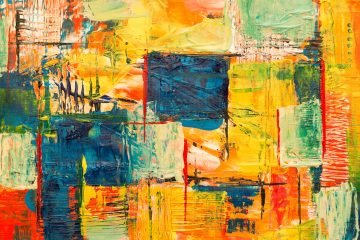Textile-based art practices refer to artistic expressions and creations that utilize textiles as a primary medium or element. Textiles are flexible materials made from fibers or yarns, including fabrics like cotton, silk, wool, linen, and synthetic fibers. Artists use various techniques and approaches to manipulate these materials to create unique and engaging works of art. Here are some common textile-based art practices:
- Weaving: Weaving involves the interlacing of two sets of threads, the warp (vertical threads) and the weft (horizontal threads), to create a fabric. Artists can experiment with different weaving patterns, colors, and textures to produce intricate and visually captivating designs.
- Embroidery: Embroidery is the art of decorating fabric using needle and thread. Artists can create intricate patterns, images, or text on fabric, adding depth and detail to their textile pieces.
- Quilting: Quilting is the process of sewing together multiple layers of fabric to create a thicker, padded material. Quilts are often decorative and functional, serving as blankets or wall hangings.
- Textile Printing: Artists can use various techniques like screen printing, block printing, or digital printing to apply colors and patterns onto fabric surfaces.
- Fiber Art: Fiber art encompasses a wide range of techniques, including knitting, crocheting, macramé, and felting. Artists can use these methods to create sculptures, wall hangings, wearable art, and more.
- Tapestry: Tapestry art involves weaving images or designs directly into the fabric using colorful threads. These woven pictures can be large-scale and are often used as wall hangings.
- Collage: Artists can incorporate textiles into mixed-media collages, combining fabric pieces with other materials like paper, photographs, or found objects.
- Dyeing and Batik: Artists can apply dyes or wax-resist techniques (batik) to create intricate patterns and colors on fabric surfaces.
- Textile Sculpture: Sculptors can utilize textiles as their medium to create three-dimensional artworks, pushing the boundaries of traditional textile art.
- Wearable Art: Some artists create unique clothing or accessories using textile techniques, turning them into wearable pieces of art.
Textile-based art practices offer a rich and diverse creative space for artists to explore themes like identity, culture, history, and societal issues. The tactile nature of textiles adds a sensory dimension to the artwork, making it engaging and captivating for viewers. Over the years, contemporary artists have continued to push the boundaries of textile art, blurring the lines between craft, fine art, and design.


 Protected by Patchstack
Protected by Patchstack
0 Comments